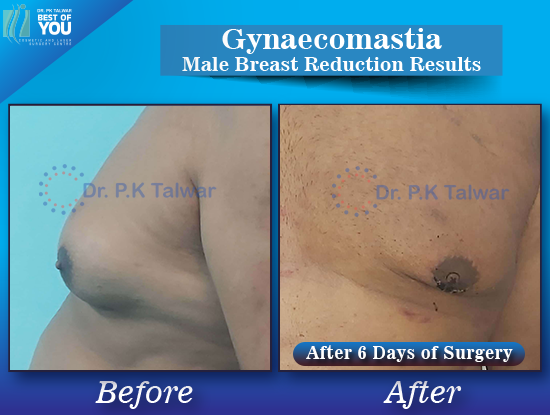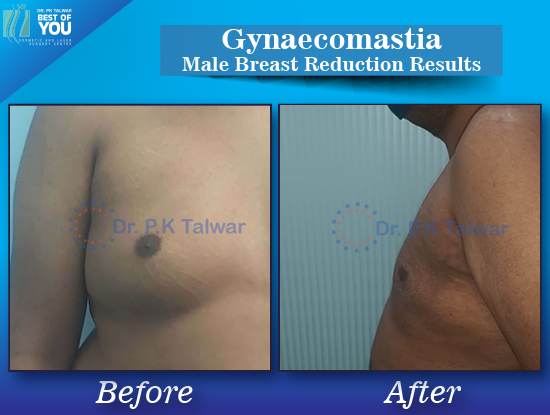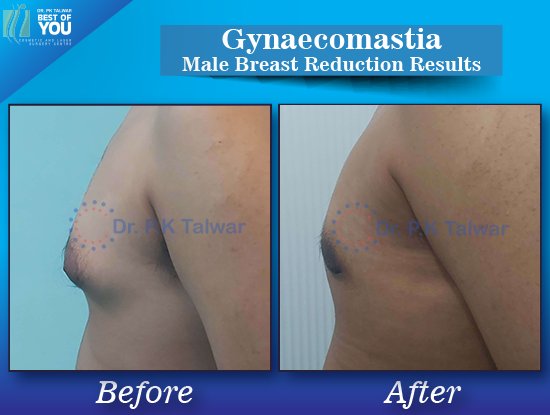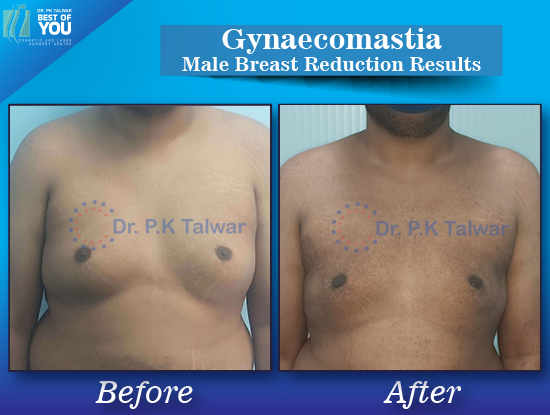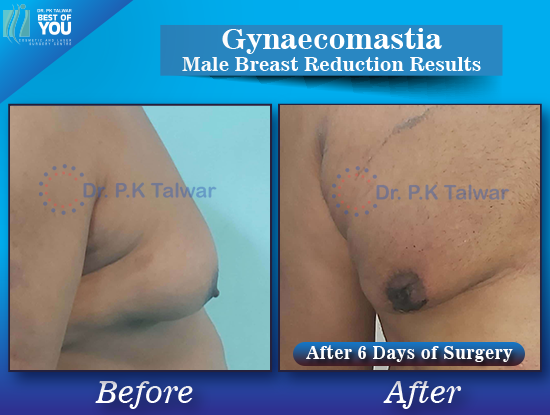
Gynaecomastia Surgery in Delhi, Male Breast Reduction Surgery
In Gynecomastia, a man experiences the growth of abnormally large breasts due to the overgrowth of breast tissue. It can be caused by many reasons, be it genetic or hormonal imbalances. It mainly depends on the amount of estrogen, as it leads to the development of breasts in its large amount. Increased consumption of alcohol or steroids is also another cause of breast development. Dr PK Talwar is the Best Cosmetic Surgeon doctor for Gynecomastia (Male Breast) Surgery in Delhi.
It is experienced in pubescent boys or older men. In older men when androgen generation is reduced, it leads them to Breast Development. In many cases, patients who are treated for gynecomastia, cancer breast development problem is found in them. Being overweight is also one of the reasons for breast development. To overcome this problem Male Breast (Gynecomastia) Reduction in Delhi is performed and the time taken in treatment is around 2 to 3 hours. A patient with good mental health and who need treatment for physical transformation is an ideal candidate for this treatment.
Types of Gynaecomastia
Unilateral Gynaecomastia
Gynecomastia can be a debilitating illness for males. Although gynecomastia is not medically hazardous, it can have a terrible emotional impact on a man's life. Many men with gynecomastia are anxious, depressed, and embarrassed about their enlarged breasts, and they may avoid certain social activities such as swimming or going to the beach. While the vast majority of gynecomastia patients have bilaterally enlarged male breasts, which means the disorder is present on both sides, a small minority of men experience unilateral gynecomastia. One-sided gynecomastia may appear to be a "better" option, but in reality, the asymmetry is typically more difficult to deal with than having gynecomastia on both sides.
Bilateral Gynaecomastia
Gynecomastia is a benign enlargement of the male breast (typically bilateral, but sometimes unilateral) caused by proliferation of glandular components. Clinically, it is distinguished by the appearance of a rubbery or firm mass radiating concentrically from the nipples. Pseudogynecomastia (lipomastia) is characterized by fat deposition without glandular development and should be distinguished from gynecomastia.
Asymmetric Gynaecomastia
Asymmetric gynecomastia was defined as gynecomastia that met both of the following criteria: on physical examination, the size of the palpable mass beneath the nipple-areolar complex was twice as large as the smaller one; and on ultrasonography, the depth of the glandular tissue beneath the nipple-areolar complex was twice as deep as the smaller one.
 Contact us
Contact us

